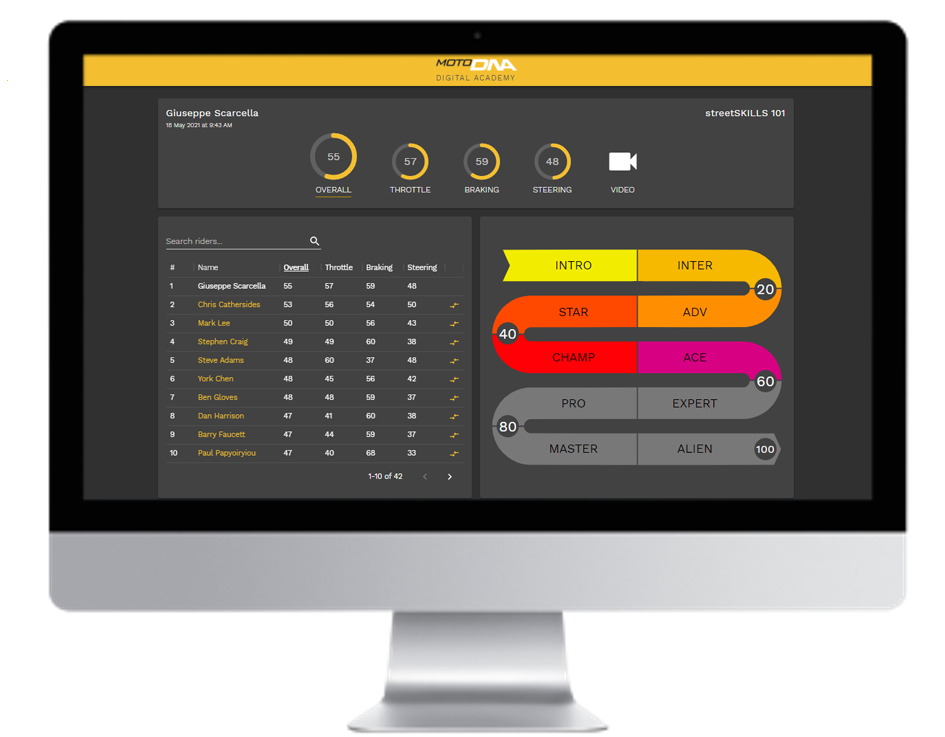In these high tech days of electronic fuel injection you would expect motorcycle throttle response to be smooth as. However many of the latest bikes have a snatchy and jerky throttle response; especially around town at low speeds feeling more like a switch than a throttle.
This is not just plain annoying but makes holding a steady throttle in corners and riding in town tricky, often becoming a bigger problem in wet and slippery conditions.
On the track, life can be even more difficult when the bike is closer to the edge of the tire due to higher lean angles.
The throttle controls not only acceleration and traction but has a large influence on our bikes handling including weight transfer, steering and stability. The throttle is also our connection to the rear tire. If it’s linear and smooth, this is reflected in our riding performance. We expect modern bikes to have smooth and accurate throttle response; but in fact throttle response is worse these days compared to carburettors of old.
Why? In one word, emissions.
Engines are more efficient and powerful than ever however ever tightening emissions laws mean that engine engineers have to lean out the engine map at certain speed and load points where emissions are measured in the power curve.
You may notice flat spots in your throttle curve; this is often the point on the engine map that these emissions are measured and therefore has a reduced amount of fuel available to the engine. You may also feel some hesitation getting back on the throttle?
For best ride-ability ideal fuelling ‘wets’ the cylinder head intake ports which smooths out initial throttle application.
However, the latest emissions laws also remove this ‘wetting’ strategy adding to the harshness of modern motorcycle throttles. Emissions are the nasty by-products of engine combustion that come out our exhausts such as Carbon dioxide, Carbon monoxide and Hydrocarbons.
There are lots of strategies to clean up emissions such as air injection and catalytic converters; however the easiest method is to reduce the amount of fuel injected into the engine or to run a lean air to fuel ratio. Ideal combustion to burn all the fuel in the engine and reduce emissions occurs at a ratio around 15 parts of air mixed with 1 part of fuel, however Maximum power and smooth throttling needs around 10% more fuel.
This fuelling is generally controlled using the lambda sensor in your exhaust which measures the air to fuel ratio while a control loop strategy in the ECU adjusts the engines fuelling to match the target mixture.
All the trouble started when Euro CO emissions laws effectively halved ten years ago and then halved again 2 years later. Motorcycles are different to cars, that’s why we love them, however motorcycles by nature make engine mapping even more difficult compared to four wheels. Extra challenges for the Motorcycle Engine Engineer include starting, higher revs, lower weight, lower engine inertia and transient fuelling. This intricacy is also reflected in the racing world where MotoGP ECU Engineers who work on fuelling, traction control, engine braking, etc are amongst the highest paid. This complex role is pivotal to a team’s success and is reflected in their pay packet.
What does the future hold? Apart from electric bikes, which have a superb torque curve, we are looking at larger catalytic converters, faster ECU processing performance, throttle cam development and advanced fly by wire. Common after-market mods include changing the exhaust to match an ECU change either via re-flashing or fitting a Bazzaz or power commander. This basically involves removing the catalytic converter and adding fuel. It is most likely this setup has been tested on a dyno and a plug in is available for your bike.
Or we could just buy an old bike with carbs?
Data Driven
Developed from thousands of riders at the motoDNA Motorcycle Training, our algorithms measure, grade and train motorcycle riders.
Objective
No more guessing, data sensor fusion combined with our algorithms deeply understand rider behaviour.
Towards Zero
Our urgent and ambitious aim is to empower the motorcycle community to take back control towards zero.


